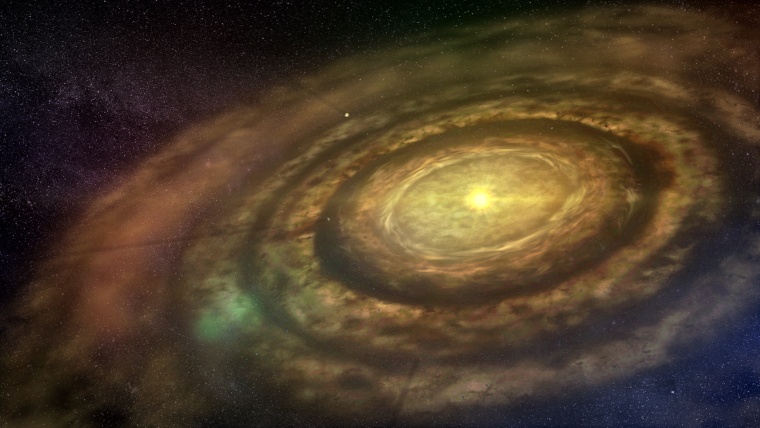Planets may not be able to form without a heaping helping of heavy elements such as silicon, titanium and magnesium, a new study suggests.
Stars that host planets have higher concentrations of such "metals" — astronomer-speak for elements heavier than hydrogen and helium — compared to iron than do planetless stars, the study found.
"To form planets, one needs heavy elements," said lead author Vardan Adibekyan, of the Center for Astrophysics of the University of Porto in Portugal.
Connected at birth
Planets coalesce from the disk of dust and gas left over after the birth of their parent star. According to the leading theory of planet formation, the core accretion model, small particles clump together, growing larger and larger until they produce protoplanets.
Scientists have long suspected that stars with higher metallicities are more likely to have planets orbiting them. Iron has long been a primary indicator.
"Usually, in stellar physics, people use the iron content as a proxy of overall metallicity," Adibekyan told Space.com via email.
Studying sunlike stars
Adibekyan and his colleagues studied 1,111 sunlike stars, 135 of which host planets. They analyzed spectroscopic observations made by the European Southern Observatory's High Accuracy Radial velocity Planet Searcher.
The team focused especially on so-called "alpha elements," which are produced by adding a helium nucleus — also known as an alpha particle — to another atom in the interior of stars. For example, adding an alpha particle to a carbon atom results in an oxygen atom.
The scientists found that the planet-harboring stars have high metallicities, containing lots of alpha elements such as silicon, titanium and magnesium. Further, the ratio of such heavy elements to the amount of iron was consistently higher in stars with planets, with the greatest discrepancy observed for magnesium.
While affirming the importance of stellar metallicity in planet formation, the new study also implies that metals other than iron may play a more crucial role than previously considered, particularly for low-mass planets, researchers said.
"Although terrestrial planets can be found at low-iron regimes, they are mostly enhanced by other metals," Adibekyan said.
The results were published in the July issue of the journal Astronomy & Astrophysics.
Follow Space.com on Twitter . We're also on and .
